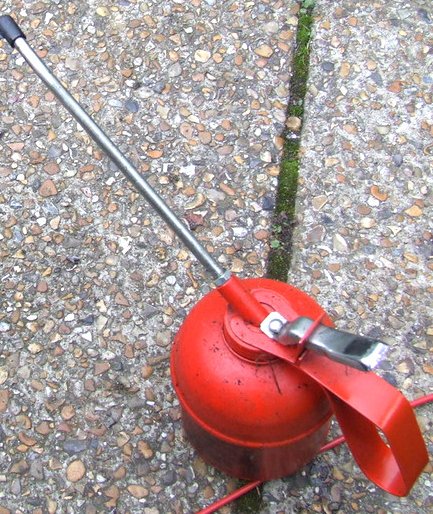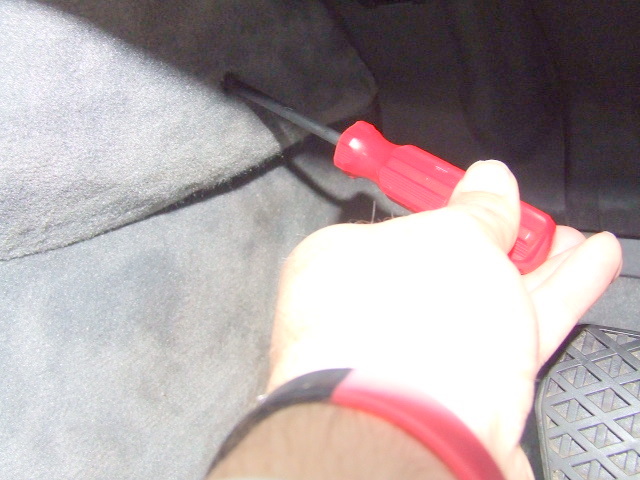The brake feel on the RHD 8-Series is awful, a light poke gives the feeling that the brakes have given up or that the brake pads are made of granite. A harder poke and you are being thrown against the seat-belt. There is no doubt that the brakes work OK, it is just that they don't feel like they are working to start with. The problem is more noticeable at slow-speeds, for instance, when driving the car around a car park.
There is a good reason for this.....the brake pedal is on the right-hand side of the car and the master-cylinder is on the left! The shape of the chassis and the size of the V8 (and V12) means there is no room for the master-cylinder in front of the driver. Instead, just like on my old E28, there is a system of linkages between the pedal and the master-cylinder that looks like this:

The difference between E28 and E31 is that on the later car, the linkages are inside the car whereas on the E28 they are fitted to the engine-side of the firewall. The plan is to lubricate the linkage bearings, the problem is getting to them!
Here we go then, let's start with the linkage to the master-cylinder on the passenger-side. This is going to hurt a bit as it involves a lot of kneeling and contortions. Start by removing the passenger kick-panel, this is held on by two plastic fasteners at the rear of the panel:

The kick-panel has a lip which hooks over the plastic side-panel to the left. The kick-panel also has the 'Lady Of The Bongs' sounder which has two connectors plugged into it, remove both connectors:

The kick-panel can now be put aside. In the top-right of the foot well you can now see a black cover that encloses the master-cylinder pivot and linkage. It has three clips, top, bottom and one on the right:

Pull the cover out at the bottom, then the top and then pull it to the left, it's a bit fiddly but nothing like as tricky as it is to get it back in again! Here's the cover after removal, not where the clips are:

Here is what the mechanism looks like:

All the pivots need oiling, there are four areas of which only two are seen here. Refer to the first diagram, parts 7 and 15 need oiling at the top and bottom of the shafts and at both linkage points. Before doing this ,'borrow' a few tea-towels to cover the carpet, they need to be left in place for a while.
It isn't easy getting the oil in the right place and there will be considerable dribbling so be prepared. I used a standard oil-pump and new engine oil. I wish I used something else because it does smell a bit! After oiling try and wipe off the excess oil otherwise it will drip for days:

Right, that's one side done, leave the towels in place and move onto the drivers side.
Remove the side-carpet, it is held on by a single screw (just like the E32):


Remove the plastic fasteners at the top and bottom of the kick-panel, they need to be rotated 90 degrees:


There is also a single self-tapper slightly right of the centre of the panel, remove this. The panel (like the passenger panel) is hooked over the plastic side panel, a bit of wiggling and it's out:

The self-tapper was fastened to the foot air-vent as shown here:

There are five places to oil this time (check the diagram on the previous post). The main pivot is difficult to get to but persevere. There will be oil running down the brake pedal so be prepared for a lot of mopping up:

Once everything is oiled, pump the brake pedal loads of times to work the oil in. Do a final mopping-up and replace the covers. The passenger-side master-cylinder cover is a real pain to refit but keep going and it will clip into place in the end!
The results were excellent, at last there is some feel to the pedal and the driving experience is so much better. It still isn't as good as the 740i but that has the master-cylinder in the right place! Of all the repairs I've done this is the one that really makes a difference.
Time for a cup of tea and a hot bath, this repair is a real crippler.........
